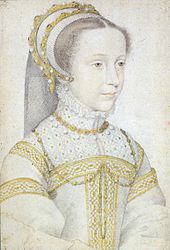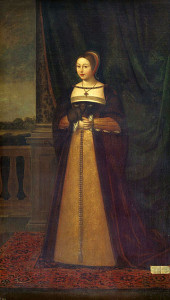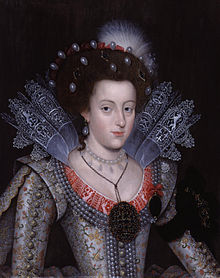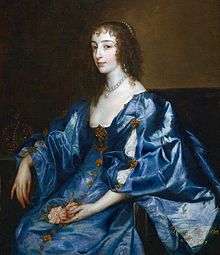
HistoryPop S04E03: Medievialisms of Disney – Pocahontas II

Courtney Herber, Ph.D. – Historian
Politics, gender, performance, and theatre in the early modern world

This is one of the first DH projects that I’ve worked on. It shows Anna of Denmark’s official entry into Edinburgh.
Process:
I found a near contemporary map of Edinburgh and using a narrative account of her entry, plotted each point on the map and have included what pageants happened at each site as well as historical engravings or photos of the landmarks of Edinburgh.
Firstly, I found the 1582 map of Edinburgh on the National Library of Scotland’s webpage. It said that the map itself was free to use for academic purposes, but it was provided in a much smaller format. Geoff was able to find a high quality version of the same map and piece it together to be used in a “zoomify” project, where it can, well, be “zoomed” into to see smaller details in great clarity. Once it was zipped together like a digital jigsaw puzzle, I worked to figure out where each of the places mentioned in the Danish account of the Entry were located. To do that, I consulted Google Maps for some, my own knowledge for others, as well as a fantastic historic map collection (of JUST Edinburgh!) put together by Christopher Fleet and Daniel MacCannell and published in association with the National Library of Scotland. The narrative account is contained in David Stevenson’s Scotland’s Last Royal Wedding, with an English translation by Peter Graves. All quotes, unless otherwise noted, as from Scotland’s Last Royal Wedding.
After reading through the narrative account and finding any specific places mentioned by name, and plotting those on the map, I had to figure out a logical path to find all of the other places that were not mentioned by name. I think I have done so accurately, but the stylized nature of the map makes pinpoint accuracy difficult. I’m sure there were many more “side streets” in the Edinburgh of 1590 than pictured in the map, just as there are many little alleyways today.
Once I established a credible path for Anna’s entry to follow, I set about finding images to go along with each place. I tried to include both contemporary or near-contemporary images of how the building or feature would have looked in Anna’s time as well as modern photographs (especially the gorgeous view from the inside of St. Giles!). After that, I tried to re-write some of the pageants and to describe them simply so that one could follow along easily and enjoy imagining some of the splendor of Anna’s entry. Sometimes, I found that I could not do the original text justice and left the quotes, but others I found I could put my own rhetorical spin on and re-wrote. This is, of course, not complete as the narrative account does contain the text of the speeches and pageants, but instead of including the lengthy prose I wanted to impart more of the visual aspects of Anna’s journey, rather than the textual.
The reason that I chose this particular project to craft is two-fold. One, is honestly I’ve just been wanting to do this for a long time and finally found the software that I could do it with. I’ve worked with Anna for years now and have been itching to do more work with her in the last year. Secondly is more of a scholarly reason: Entries seem to be rather understudied. I am building for myself a scholarly toolkit of historian’s tools but also literary analysis and theatrical analysis and Entries are perfect blends of all three. Entries are important introductions into not only how royals wanted to represent themselves to their people (self-fashioning), but also the expectations that the people had for their new king or queen. It was their first chance to see their new king or queen, resplendent in their finery. It was meant as a way to both flatter and educate the king or queen, and so can give a little insight into who that king or queen was as a person and how they were perceived by others. For Anna, much was made of her royal lineage and how powerful and noble Denmark was. The people of Edinburgh, in their speeches, asked Anna to be good, kind, virtuous, and to bear James many children. They also asked her to love Edinburgh and Scotland, even though it was not as rich or powerful as Copenhagen or Denmark. They also wanted her to love James, because he was also just and wise. This shows not only the love that they hoped that Anna would bestow upon them, but the love they had of their own city and kingdom. They felt Scotland a worthy match for Anna, just one that is a little rough around the edges.
Without further ado, Anna’s Entry into Edinburgh, 1590:
This BBC programme, all about how the Stewarts led the century that set up England, Scotland and Ireland to become Great Britain, is a highly watchable and accessible piece of work by Dr. Clare Jackson, of Cambridge University.
 (Mary, Queen of Scots as a young girl)
(Mary, Queen of Scots as a young girl)
“The Stuarts” BBC Programme Link
In it, she starts of telling the story of James VI and his impeccable lineage, descended from not only the Scottish Stewarts, but also the Danish royal family (Through Margaret of Denmark), and, more importantly, the English royal family (through his paternal great-grandmother, Margaret Tudor). He had apparently always felt that he would unite the crowns and kingdoms of England and Scotland under one man, himself. Dr. Jackson then takes us through his efforts to legally unite the two nations, but for James, to no avail.
 (Margaret Tudor, daughter of Henry VII and Elizabeth of York)
(Margaret Tudor, daughter of Henry VII and Elizabeth of York)
What was curious for me, and I was glad to see it, was that she had also paid attention to Henry Frederick, James’ eldest son and Prince of Wales. In many texts, his life tends to be glossed over a bit as it wasn’t he, but his younger brother Charles, who succeeded their father as King. This was due to a premature death at the age of 18. From there, Dr. Jackson goes into the story of Charles as Prince of Wales and his incredible journey to Spain. She supposes that much of his style of kingship was influenced by his time there as a guest of King Philip IV. His love of pageantry and his insistence on ceremony may also have been influenced by Philip’s court.
 (Elizabeth Stuart, the Winter Queen, daughter of Anna of Denmark and James I)
(Elizabeth Stuart, the Winter Queen, daughter of Anna of Denmark and James I)
She concludes the episode after explaining how Charles came to be king, married a French princess, the Catholic Henrietta Maria, and the struggles he faced over religion with Scotland.
 (Henrietta Maria, queen consort to Charles I)
(Henrietta Maria, queen consort to Charles I)
All in all, this episode is a fabulous bit of history and it was quite enjoyable to watch! The only thing that was frustrating to me, really was the lack of Queen Anna. Her name was mentioned exactly once. That was in reference to the death of Henry. Was Anna’s influence as queen consort not felt more than just the death of her son? Wasn’t she a partner in the creation of the legacy of the Stuart dynasty? She spent 14 years in Scotland with James before they took England by storm in 1603. She then spent 16 years as Queen of England before her death in 1619. It seems as though she was shunted to the side, ignored. Henrietta Maria got her portrait on the screen and the mention about how she was Catholic. There is evidence to support a supposition that Anna converted to Catholicism, so wouldn’t that conflict between her and her strongly Protestant husband make for an interesting bit of monologue?
What seems to be forgotten, at least so far, is the story of the women of the Stewart/Stuart dynasty. Brief mention of Mary, Queen of Scots, Margaret Tudor, Elizabeth Stuart, Henrietta Maria, and even less for Anna. Perhaps this will be discussed in the future two episodes set to air? If not, then I hope there will be material on the programme’s website dedicated to these women. (Anna’s not even mentioned in the “The early Stuarts: marriage is power” page!) I think that focusing on the monarchs makes for good TV, but including the consorts and daughters makes for good history.
“It is noteworthy that the model for the King’s action is Greek. Luminalia also had a Greek component in that one of the minor themes dealt with the expulsion of the Muses from Greece and their eventual settlement in Britain. Greece signified culture in contrast to Rome with its associations with military and imperial might.”
– Graham Perry, The Golden Age Restor’d: The Culture of the Stuart Court 1603-42, Manchester University Press, Manchester, 1981, p. 202-203.
Upon reading the above quote in Graham Perry’s work on the Stuart masques, it really got me thinking of Queen Anna’s first public masque, The Vision of the Twelve Goddesses by Samuel Daniel and designed by Inigo Jones. Even though the quote is in reference to the Caroline masques and not the Jacobean ones, it is an interesting framework to examine the assignment of roles in the masque. Performed in 1604, it was the first masque of Anna’s career as Chief Masquer (not Blackness by Ben Jonson in 1605 as Perry asserts). Below I have compiled a chart of who danced with Anna in the masque and what persona they embodied. This is an appendix taken from a paper I wrote up as a thesis of sorts to complete a directed study. In the scope of this post, I’ll just be looking at the role that Anna took, rather than the ones that were assigned to her Ladies of Honour. I hope to, at another juncture, have the opportunity to look even deeper at the masque and analyze the iconography and symbolism in the text and device.
| The Vision of the Twelve Goddesses, by Samuel Daniel | |
| Name/Rank | Role |
| Queen Anna | Pallas Athena |
| Countess of Suffolk | Juno |
| Countess of Hertford | Diana |
| Countess of Bedford | Vesta |
| Countess of Derby | Persephone |
| Countess of Nottingham | Concordia |
| Lady Rich | Venus |
| Lady Hatton | Macaria |
| Lady Walsingham | Astraea |
| Susan de Vere | Flora |
| Dorothy Hastings | Ceres |
| Elizabeth Howard | Tethys |
I’ve gone through and done a simple sorting scheme – Red = Roman, Green = Greek. The role that Anna chose for herself was quite significant in terms of how she wanted to be perceived and was an effort in self-fashioning her public identity. Instead of choosing the role of the Roman Queen of the Goddesses (well, Queen Consort!), Juno, she gave that role to Catherine Howard, the Countess of Suffolk. Suffolk had served Queen Elizabeth for many years and was a person Anna respected and trusted, as is evidenced by the fact that Suffolk had been chosen to be godmother to Anna’s daughter, Sophia. Anna accorded Suffolk with a very high honor in placing her as the queen of the goddesses. Her choice for herself was Athena, the Greek goddess of wisdom, battle, and the arts.
Athena was also the patroness of the City of Athens, which was named for her. An ancient cosmopolitan centre, Athens was home to a bustling arts and culture scene and has typically been regarded as the birthplace of western civilization as we know it.
Perhaps Anna’s motive was to seize a new image for herself, one that reflected virtues that she wanted others to think she possessed, or ones to which she did lay rightful claim? Perhaps her choice of Athena was a chance to scintillate and titillate the English and to show that she was a very different sort of Queen consort? The last queen consort, Katherine Parr, was also a very literary woman who published popular works in her own name while she was Queen. Anna didn’t create written works on her own, she was more of an idea lady who directed the works of others. It was through those works though, that the image that Anna wished to portray comes out clearly. In Vision of the Twelve Goddesses, as Athena, her persona was of a strong, wise female who held dominion over Athens. Her costume included a short tunic (that bared her legs below the knee) and a helmet with a spear.
Anna’s husband, James, dearly held to the ideal of pacifism and detested using force and military might. With her act of appropriating the weaponry and tools of war, Anna took on a more traditionally masculine role in their perceived relationship and set herself up as a worthy successor of Elizabeth I. Which was a prudent act to take as the costumes were also from Elizabeth’s wardrobe. As a cost saving measure, the Late Queen’s wardrobe was raided for her sumptuous gowns and the garments altered to be fit into appropriate costumes for the masque.
(“I know I have the body of a weak, feeble woman; but I have the heart and stomach of a king, and of a king of England too, and think foul scorn that Parma or Spain, or any prince of Europe, should dare to invade the borders of my realm; to which rather than any dishonour shall grow by me, I myself will take up arms, I myself will be your general, judge, and rewarder of every one of your virtues in the field.” ~excerpt from Elizabeth’s speech at Tilbury, 1588)
Looking to the quote at the start of the post, however, it is interesting that Anna chose Athena instead of Minerva. Minerva, Athena’s Roman counterpart, would have more exemplified the Early Modern interpretation of the Roman empire, one of peace loving imperialism, instead of the Greeks, who demonstrated the aforementioned arts and sophistication. Anna, then, presented a dual image. With choosing the Greco-interpretation of Athena, she sided herself with the perception of culture that was generally accepted to have belonged to the Greeks. Perhaps she was trying to conflate the new dynasty with a rebirth of Athens. With choosing Athena, though, she also personified the militaristic might of the Goddess of War, tempered, of course, with Wisdom.
In so doing, Anna managed to display both the sophistication of the Greeks with the imperialistic might of the Romans, subtly reminding the attendees of the virtues of Pax Romana and the olive tree of Athens.
In light of the fantastic experience I had at Kings and Queens 3, I come away with an even greater appreciation for the act of research and the necessity of sharing said research with others. I was inspired by the many fantastic papers I heard and would like to work on some more projects of my own in the near future.
First project? I will continue the work I presented at the conference. I still have a few more masques of Anna’s to analyze and I have even more ideas thanks to comments and questions at the panel to inform my current work. I’ll work on adding in ideas from Samuel Daniel’s work, “Tethys Festival or The Queen’s Wake” and then the final Anna-produced masque, “Love Freed from Ignorance and Folly.” I’ll continue to focus on the political use of the masques as well as a literary analysis in terms of how Anna used them to self-fashion her own public image.
I was also particularly inspired by the work presented by Estelle Paranque, “Jezabel d’Angleterre”: Queen Elizabeth I through French eyes” and how she used French sources to chart and analyze the reaction of the royalty and aristocracy to Elizabeth’s rise and reign. I think it may be particularly interesting to analyze the French (or others) reaction to Anne Boleyn’s meteoric rise and catastrophic fall. The French perspective would be, I think, the richest to focus upon because of Anne’s early ties to the French royalty. This will also make me work on learning French, which, after this conference, I’ve learned is a necessity. This site is one that Estelle said she used quite a bit, and I hope it’ll aid me in my research: Gallica.
Another particularly inspirational paper, for my research, was “Scotland’s Royal Children: 1371-1528″ by Amy Hayes. She worked on researching the lives of the children of monarchs who were not expected to inherit the throne. This was difficult research for her as there is scant documentary evidence available. It doesn’t seem to exist. What I would like to do, though, is look for threads on the curriculum taught to these children and to piece together the educational programme established for the royal broods. England will be far easier than either Scotland or Ireland, and I’d also like to add in the Danish royal family. There are not that many (read: basically none) sources in English on the Danish royal family, but with the work I’ve done on Anna of Denmark, I would really like to see what I can do to piece together her early childhood and that of her siblings. One key way to understand the reigns of monarchs is to understand what was taught to them as children. I’d like to do that with Anna and her siblings to start off with and then move on to other royal broods.
This is in addition to studying for the GRE (again… ugh) and getting applications in line for graduate programs!